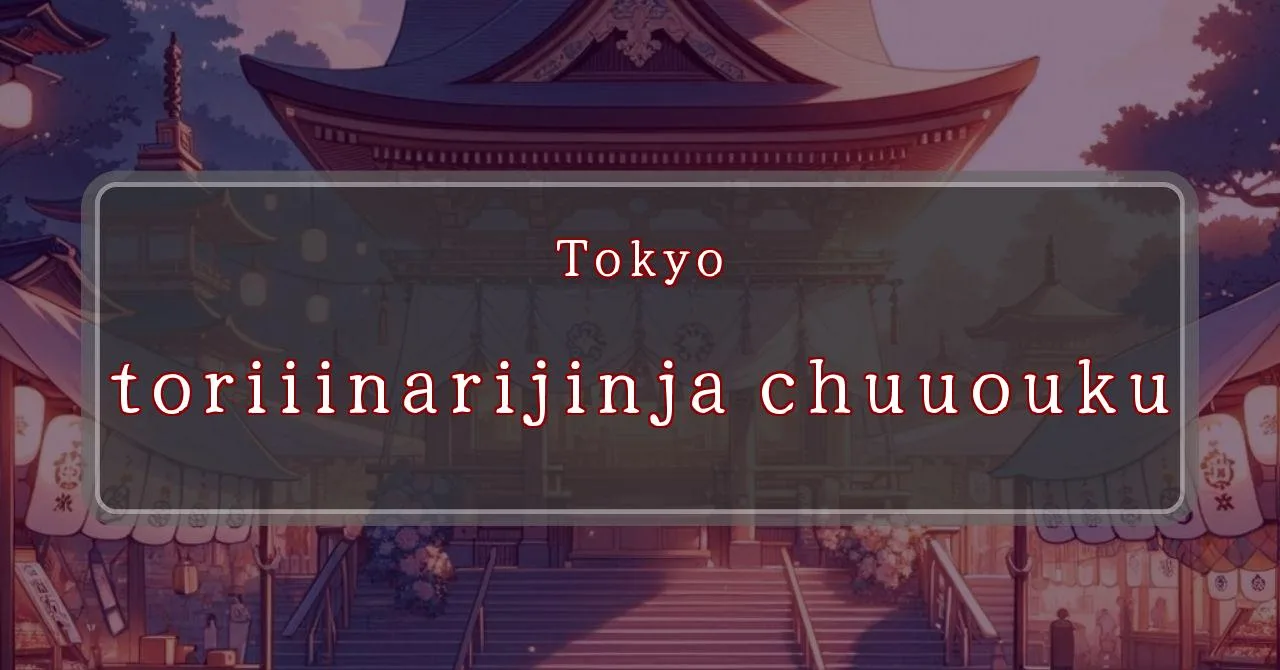Enchanting shrine festival with a history of over 300 years
Basic Information
Here is the basic information about the 2024 Torii Inari Shrine Chuo Ward festival.
- Address: 20-2 Nihonbashi兜町, Chuo City, Tokyo
- Phone Number: Not available
- Access: 6-minute walk from Kayabacho Station on the Tokyo Metro Hibiya Line and Tozai Line, 7-minute walk from Nihombashi Station on the Tokyo Metro Ginza Line, Tozai Line, and Toei Asakusa Line, 7-minute walk from Hatchobori Station on the JR Keiyo Line and Tokyo Metro Hibiya Line
- Festival Days: Around May 15th
Main Events and Attractions of the Festival
The Torii Inari Shrine Chuo Ward festival is a lively and colorful event that attracts many visitors each year. Here are some of the main events and attractions of the festival:
Mikoshi Procession
The mikoshi procession is one of the main highlights of the festival. A mikoshi is a portable shrine that is carried through the streets by a group of people. The Torii Inari Shrine mikoshi is a large and elaborate structure, and it is a sight to behold as it is carried through the streets. The procession is accompanied by music and dancing, and it is a great opportunity to experience the vibrant atmosphere of the festival.
Shishimai Dance
The shishimai dance is a traditional Japanese lion dance. The dance is performed by two people, one wearing a lion head and the other wearing a lion body. The lion dances to the beat of a drum, and it is believed to bring good luck and ward off evil spirits. The shishimai dance is a popular attraction at the Torii Inari Shrine festival, and it is sure to delight visitors of all ages.
Yatai Food Stalls
No Japanese festival is complete without yatai food stalls! These stalls sell a variety of delicious foods, such as takoyaki, yakisoba, and cotton candy. There are also many stalls selling souvenirs and traditional Japanese crafts. Visitors can enjoy a leisurely stroll through the festival grounds, sampling the delicious food and browsing the stalls.
Blessings and Deities
The Torii Inari Shrine is dedicated to Inari, the Shinto deity of rice and sake. Inari is also associated with fertility, prosperity, and success in business. The shrine is a popular destination for people who are praying for good fortune in these areas.
- Inari: Deity of rice, sake, fertility, prosperity, and success in business
- Popular destination for people praying for good fortune
Origin and History
The Torii Inari Shrine was founded in 1717 by Torii Tamba no Kami Tadayoshi, a feudal lord who ruled over the area where the shrine is now located. The shrine was originally located within Tadayoshi’s mansion, but it was moved to its current location in 1721 after a fire destroyed the mansion.
- Founded in 1717 by Torii Tamba no Kami Tadayoshi
- Originally located within Tadayoshi’s mansion
- Moved to current location in 1721 after a fire
Tips and Notes for Visitors
The Torii Inari Shrine is located in the Chuo Ward of Tokyo, a short walk from Kayabacho Station on the Tokyo Metro Hibiya Line and Tozai Line. The shrine is open daily from 9am to 5pm, and admission is free.
- Located in Chuo Ward of Tokyo
- Short walk from Kayabacho Station on Tokyo Metro Hibiya Line and Tozai Line
- Open daily from 9am to 5pm
- Admission is free
Parking Information
There is no dedicated parking lot for the Torii Inari Shrine. However, there are several coin-operated parking lots in the surrounding area.
- No dedicated parking lot for the shrine
- Coin-operated parking lots in the surrounding area
Popular Stalls and Food Carts in Recent Years
| Type of Stall | Description |
|---|---|
| Takoyaki | A staple at Japanese festivals. Characterized by a crispy outside and a creamy inside. |
| Jaga Butter | A simple yet popular snack of hot potatoes lavishly topped with melted butter. |
| Baby Castella | Small castella cakes, sweet and fluffy treats enjoyed by children and adults alike. |
| Grilled Ayu with Salt | Fresh ayu fish grilled whole with salt, a savory taste of Japanese summer. |
| Shaapin | A unique gourmet item influenced by foreign cuisine, with a chewy skin wrapping the filling. |
| Okonomiyaki | A Japanese grilled dish where you often choose your own ingredients for a personalized flavor. |
| Cotton Candy | A fluffy, sweet snack that’s extremely popular with children. |
| Chocolate Banana | A banana coated in chocolate, a fun and visually appealing dessert. |
| Kushiyaki | Various types of ingredients skewered and grilled, an easy-to-enjoy snack. |
| Yakisoba | Fried noodles mixed with a special sauce, a fast food favorite in Japan. |



